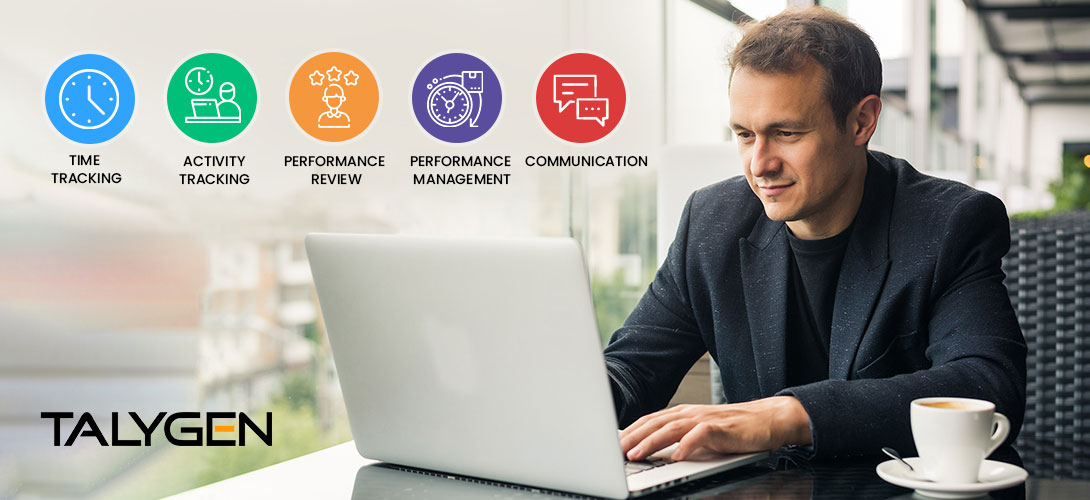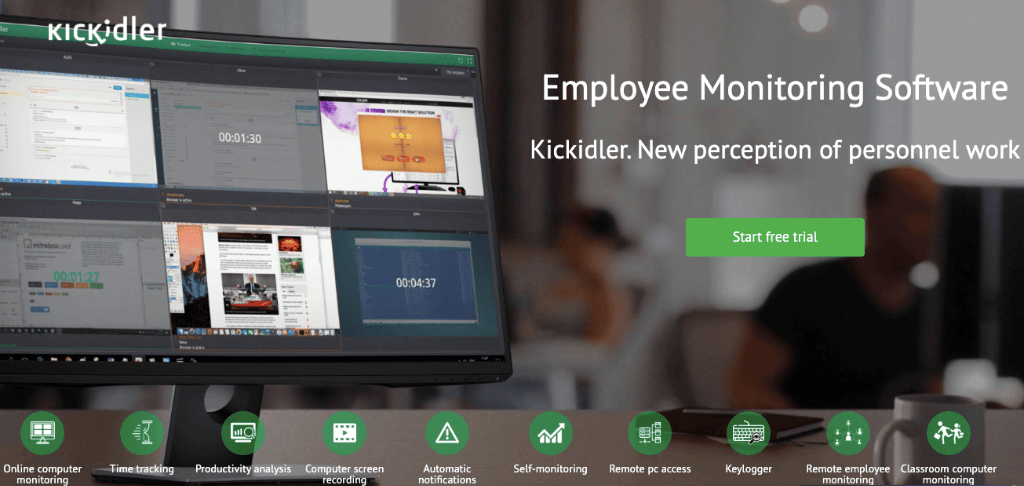Software that monitors and track the activities of employees is known as the software for monitoring employees. Employers can gather data about employees' behavior, such as the number of keystrokes, web usage and applications, screenshots and more. The principal goal of this tracking software is to increase productivity, ensure compliance with the company's policies, safeguard sensitive information and solve security issues. There are many factors to think about when selecting an employee monitoring software. Here are the most important things to remember to consider: Features- Choose which features your organization needs based on its requirements. Common features include activity monitoring, website blocking keystroke logging, application usage tracking, email monitoring, and report generation. Prioritize features based on your goals for monitoring.
Compliance and Privacy - Make sure that the software complies to ethical and legal guidelines in relation to monitoring of employees. Make sure you are familiar with any applicable laws or rules, including the privacy laws and regulations. Search for software that has transparent and configurable settings to ensure that privacy rights of employees are respected.
Be sure to consider the software's usability and accessibility. Easy-to-use interfaces and simple setup processes can speed up the process and make it easier to implement. Dashboards that can be customized and the intuitive tools for reporting can help you easily navigate the data.
Integration and Compatibility - Be sure your application can seamlessly integrate with the IT infrastructure that you are using and the systems you are using, including email clients and collaboration platforms, as well as project management tools and operating systems. The integration of compatible monitoring will ensure smooth operations without disrupting your day-to-day routines.
Data Security: Evaluate the security measures of the software to ensure the security of data. Encryption, secure data storage access controls, as well as conformity with security protocols that are industry standard are crucial. Make sure that the company selling the software has a good security track record and has robust data protection practices.
Scalability - Take into account the software's ability to grow with your business. Select software that can easily be scaled to meet the changing demands of your business when you are planning on growing your staff or adding new offices.
Reporting and Analytical Capabilities- Review the reporting and analytical capabilities of the program. Features that provide comprehensive insights into employee productivity, time management, and other trends are crucial to consider. Customized reports and analytics will help you make informed choices and pinpoint areas for improvement.
Customer Support: Assess the quality of customer service. Evaluate their responsiveness, availability and technical support. If you've got a good customer service team, they will be able to offer quick assistance whenever problems arise.
Cost- Think about the pricing model for the software, whether it's a one-time purchase, subscription-based, or usage-based. Knowing the pricing structure as well as any additional costs like support, updates or additional features is vital. Make sure you balance the cost of your product in relation to its value and features.
Transparency and Communication with Employees- Be transparent and communicate clearly with your employees when it comes to the use and implementation of monitoring software. In detail, explain the goal as well as the scope and requirements of the monitoring. Discuss any concerns and make sure they know that privacy rights will be respected.
These factors will help you make a well-informed decision on the employee monitoring software to select. Read the top time tracking monitoring service company for website advice.

What Are The Main Features And Distinctions Of Software For Tracking Employees?
Software for monitoring employees includes various features designed to track and analyze employee actions. There are numerous options available in monitoring solutions for employees. The features vary depending on the software solution but there are some aspects that are available. It gives a complete overview of the time employees spend at work.
Keystroke Logging Keystroke recording records every single keystroke entered by employees. It is a great way to identify productivity bottlenecks, detect unauthorised activities, and gather evidence for investigations should they be required.
Screenshots, and screen recordingsScreenshots and screen recordings are captured by some applications of a computer screen at predetermined intervals. Some record their screens in real-time. This is useful for monitoring productivity of employees, confirming compliance or troubleshooting issues.
Internet Usage Tracking This feature permits employees to track their online activities, including the websites they browse, search results and downloads. It helps you spot other internet activities that are not related to work and security risks, as well as violation of policies.
This feature tracks all apps used by employees at work. It helps to identify unapproved and excessive application usage by providing insight into the apps that are frequented.
Email Monitoring - This feature gives employers the capability to track employee email, which includes messages received and sent, attachments and email content. Employers can ensure compliance with policies, prevent data leaks and investigate suspicious activity.
The tracking of documents and files This feature allows you to monitor changes to files transfer, access, and modifications. It helps protect sensitive data and monitor collaboration between documents and make sure that data security is in compliance with policies.
Remote Monitoring: Employers are able monitor their employees remotely, or who are at different places. Employers have the ability to observe employee activity and monitor productivity, regardless their location.
Productivity Analysis. Programs for monitoring employees usually include productivity analysis features which give insight into employee patterns of work and productivity. These analyses can help you identify areas for improvement and optimize workflow.
Analysis and Reporting- Robust analytics and reporting tools produce detailed reports and visualisations on the basis of data that has been collected. These reports offer valuable insight on employee performance and allocation of resources.
Compliance and Policy Management - Software solutions can be adapted to ensure compliance with regulations, company policies as well as various industry standards. Software solutions that allow employers to set and enforce guidelines regarding acceptable computer usage internet access, acceptable usage, and data safety.
Alerts and Notifications: Alerts and notifications alert employees and managers to certain events and activities. For instance they may alert you about excessive Internet usage, attempts at accessing restricted websites, or other unusual behaviors.
Be aware that different employee monitoring solutions may have different capabilities and features. When selecting software, think about the features that align with your objectives for monitoring and conform with the ethical and legal standards within your area of operation. Follow the recommended employee monitoring software for more info.

What Software For Employee Surveillance Conform To The Privacy And Compliance Laws? Privacy Laws?
Employee monitoring software must be in compliance with privacy and compliance laws. The exact legal requirements differ from jurisdiction to jurisdiction, but there are a few common ways the software used by employees respects the laws on privacy and compliance Consent and Notification - Many jurisdictions mandate informed consent for employees and prior notice about the monitoring activity. Monitoring programs for employees typically include features that help employers effectively communicate monitoring guidelines to employees. This could be accomplished by sending written notices to employees, getting their consent using consent forms or creating an employee handbook that outlines the monitoring procedures.
Transparent Monitoring Policies- Employee monitoring programs encourage transparency since they make sure employees understand the kind of information that is collected, the goal of monitoring is, and the extent that monitoring is executed. Clear and comprehensive policies allow employees to understand the boundaries as well as the rights to privacy and monitoring.
Data Minimization: To be in compliance with privacy regulations employees monitoring software usually uses data minimization techniques. Data minimization is the process of ensuring that only the essential information is collected, stored and not used. This software helps to reduce privacy risks by only collecting the data needed for monitoring.
Anonymization or Aggregation - Some software designed to monitor employee behavior anonymizes and aggregates data to safeguard the privacy of employees. The process of anonymization eliminates personally identifiable information from the information. It makes it difficult to link data to an individual. Aggregation uses data from many employees to produce insights for a larger group without identifying anyone.
Secure Data Store and Encryption: Employee monitoring software puts the security collected data first. Data is secured by secure storage practices for data and encryption methods. This also includes safeguarding data on the move and at stationary.
Access Controls, Restricted Permissions In order to ensure compliance with regulations, monitoring software for employees provides granular permissions and access controls. This allows employers the ability to limit access to monitoring information to individuals with legitimate needs for example HR personnel or the designated administrator.
Rights and Redress for Employees Rights and Remedies- Adherence to privacy and compliance laws requires respect for employees' rights. Many employee monitoring programs include tools that allow employees to view their own data and make corrections, or even file complaints. Employees have the option to pursue recourse in the case of privacy violation and to exercise their rights.
Conformity to Data Protection Regulations - Employee monitoring software was created to be in compliance with regulations governing data protection, like the General Data Protection Regulation in the European Union (GDPR) or the California Consumer Privacy Act in the United States (CCPA). It is accomplished by implementing suitable measures to protect personal information, ensuring the rights of data subjects, and ensuring the lawful use of data.
It's important to note that although software for monitoring employees can aid in compliance efforts, businesses must also consult legal professionals and be aware of pertinent laws and regulations that are in their area of responsibility. A comprehensive approach to complying with privacy and compliance laws is required, which is more than just software. It involves explicit policies, as well as regular monitoring and education of employees. View the top rated time tracking monitoring services for site info.
